Introduction: The Rise of Stackable Bookshelves
The stackable bookshelves have emerged as a transformative storage solution, redefining how we organize books, decor, and personal items in compact spaces. These systems offer unmatched adaptability by allowing users to configure shelves vertically or horizontally, making them ideal for apartments, offices, and small homes. Unlike traditional bookcases, stackable bookshelves prioritize functionality without sacrificing style, blending seamlessly into modern and minimalist interiors.
Their rise reflects a broader shift toward modular, eco-conscious furniture that evolves with lifestyle changes. For instance, a single unit can start as a narrow shelf above a desk and later expand into a floor-to-ceiling library. The industrial bookshelves variant—featuring raw metal finishes and exposed brackets—has particularly gained traction among urban dwellers seeking a rugged yet stylish aesthetic.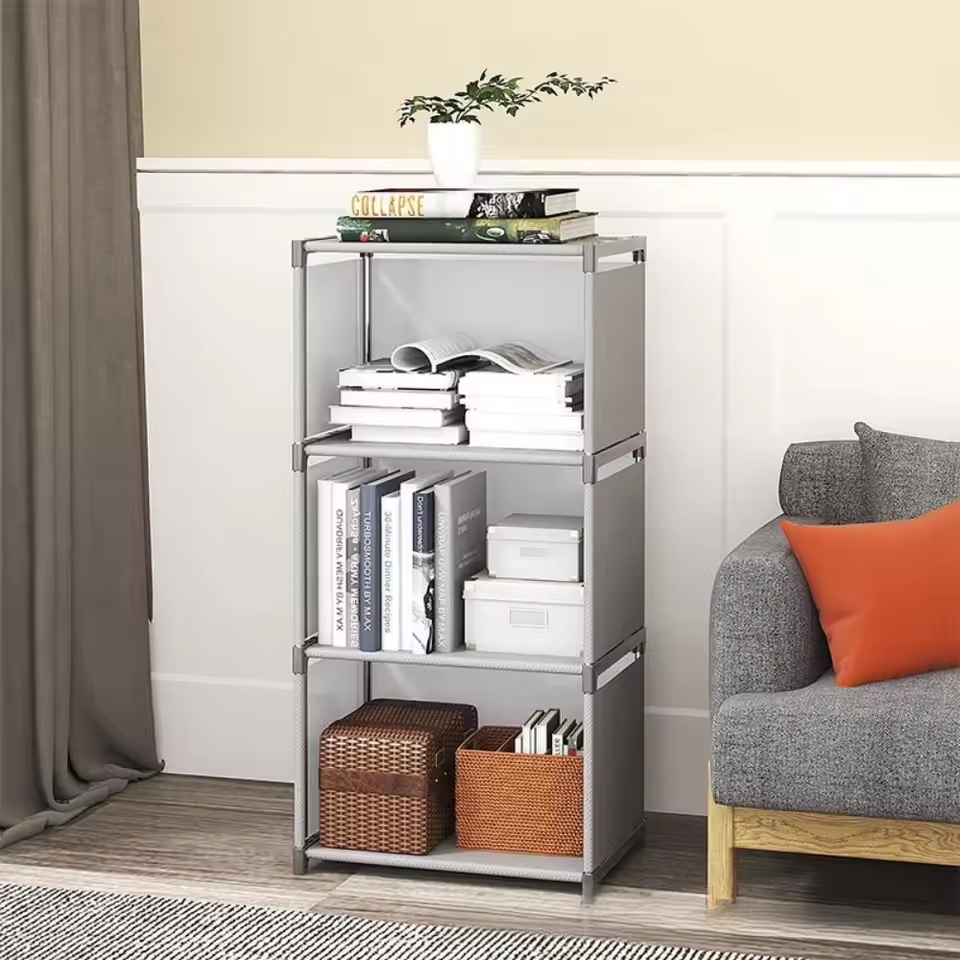
Social media platforms like Pinterest and Instagram have fueled their popularity, with hashtags like #ModularStorage trending among interior design enthusiasts. As urban density grows and floor space shrinks, stackable bookshelves are no longer just for books—they’re dynamic tools for optimizing every inch of living space.
Why Stackable Bookshelves Are Space-Saving Champions
In an era of shrinking urban living spaces, stackable bookshelves have become indispensable tools for maximizing storage without sacrificing floor space. Unlike traditional floor-standing bookcases—which occupy valuable square footage—these systems leverage vertical storage and modular design to adapt to even the smallest rooms.
1. Vertical Storage Optimization
By stacking shelves vertically, users can organize books, decor, and personal items in a tiered system that utilizes wall space efficiently. For example, a 6-tier stackable bookshelf system occupying just 2–3 square feet of floor space can store as much as a 6-foot floor bookcase consuming over 10 square feet.
2. Configurable to Any Need
These systems excel in versatility:
- Expand Horizontally: Place shelves side-by-side to create floating wall displays.
- Stack Vertically: Build floor-to-ceiling libraries in home offices or studies.
- Hybrid Arrangements: Mix vertical and horizontal tiers for dynamic layouts in living rooms.
3. Space-Saving in Tight Corners
Narrow nooks or under-window spaces become valuable storage zones with stackable bookshelves. A single shelf can display travel mementos above a desk, while a industrial bookshelves set can transform a garage into a functional workspace.
4. Adapting to Lifestyle Changes
Need more storage? Add tiers. Downsizing? Remove excess shelves. This flexibility ensures they remain useful as collections grow or rooms repurpose.
5. Aesthetic Space Efficiency
Open designs reduce visual clutter compared to bulky bookcases. Sleek metal frames or minimalist wood finishes blend into rooms, making storage invisible yet accessible.
By prioritizing adaptability and verticality, stackable bookshelves prove that smart design can turn space constraints into opportunities for creativity and functionality.
Design Versatility: From Industrial to Modern Styles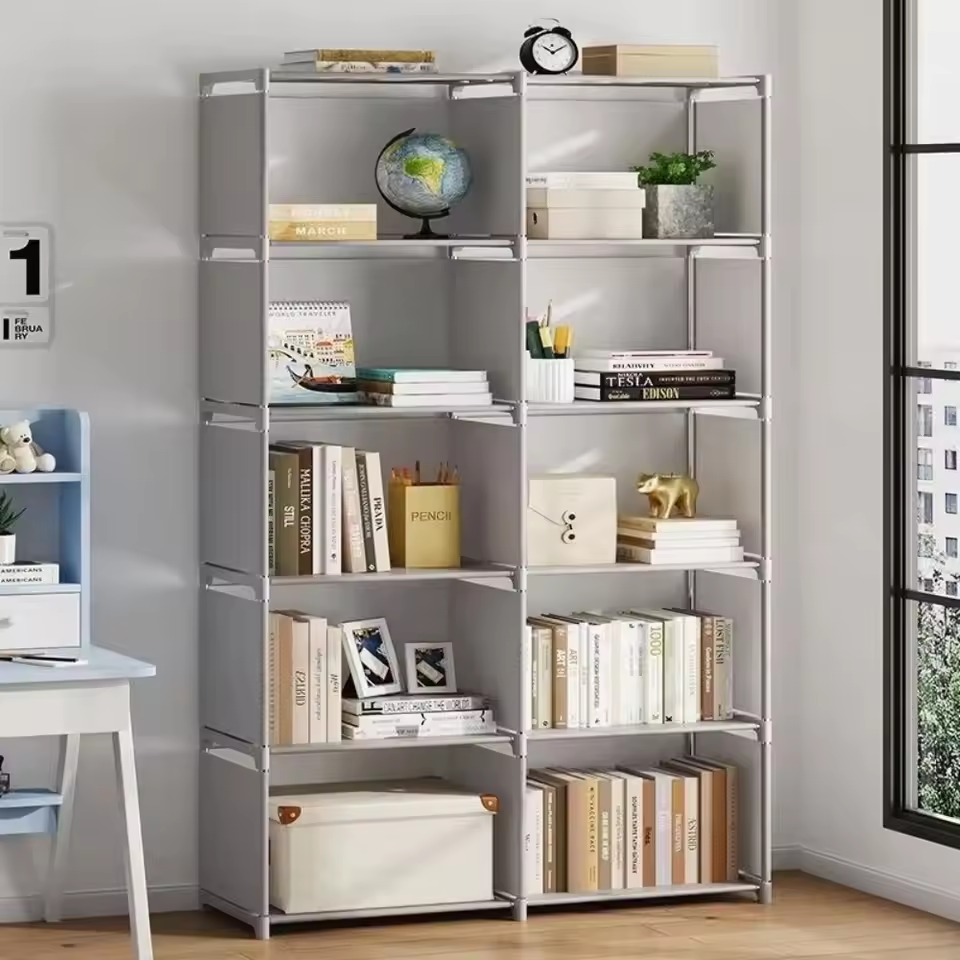
The stackable bookshelves are celebrated not only for their functionality but also for their ability to adapt to diverse interior design styles. Whether you crave the rugged charm of industrial bookshelves or the sleek lines of modern minimalism, these systems offer endless aesthetic possibilities:
1. Industrial Edge
For a bold, urban look, opt for industrial bookshelves featuring raw metal finishes, exposed bolts, and weathered wood accents. Pair them with Edison bulbs or metal shelves to create a loft-like ambiance in living rooms or home offices.
2. Modern Minimalism
Clean lines and neutral tones dominate this style. Sleek white or matte black shelves with polished edges blend seamlessly into Scandinavian or contemporary spaces. Open designs paired with LED-lit edges amplify the minimalist vibe.
3. Rustic and Farmhouse Charm
Warm, textured finishes like distressed oak or reclaimed wood panels evoke cozy rusticity. Combine with woven baskets or vintage decor for a farmhouse-inspired display.
4. Modular Customization
The modular nature of stackable bookshelves allows mixing materials and finishes. For example, stack a metal tier with a wooden one to add visual contrast. Paintable MDF or veneer options ensure they match any room’s palette.
5. Bold Statement Pieces
Geometric designs or colored finishes turn shelves into focal points. A staggered arrangement of stackable bookshelves in vibrant hues can redefine a living room’s aesthetic.
When choosing, consider your room’s existing decor and whether you prefer a subtle accent or bold statement. Stackable bookshelves are more than storage—they’re tools to express personal style while optimizing space.
Modular Flexibility and Customization Options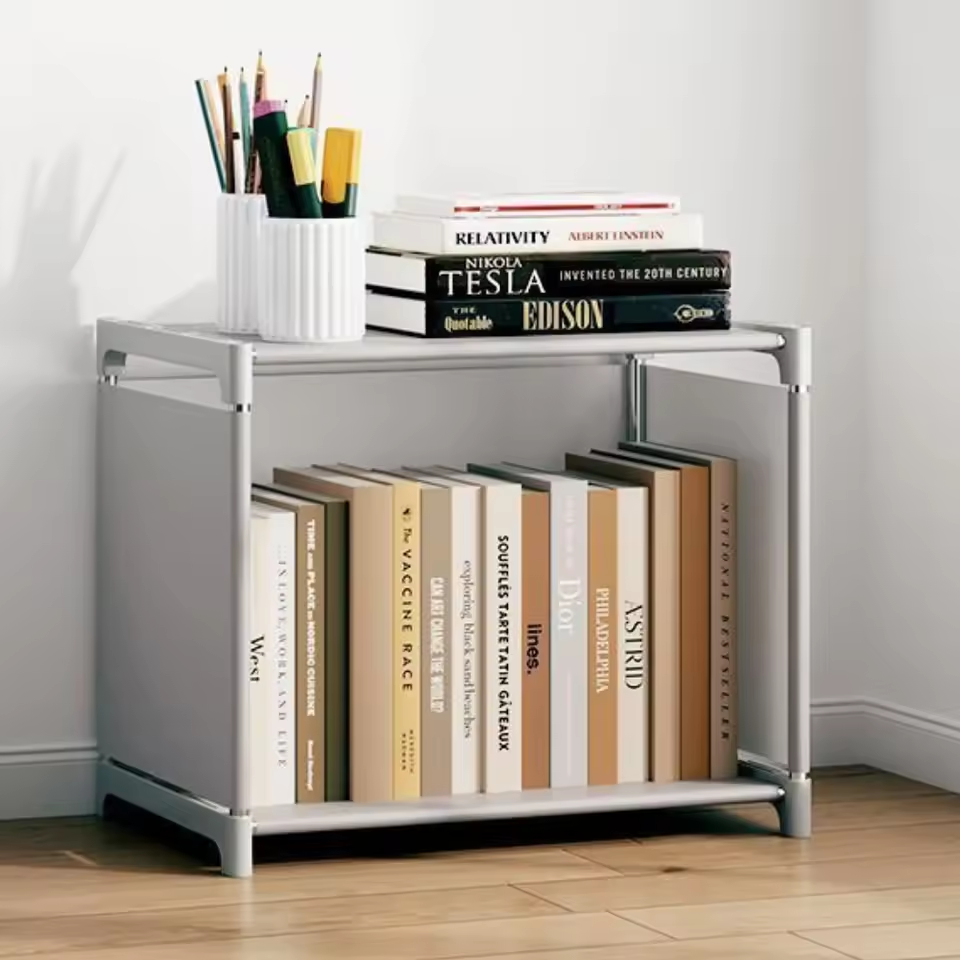
The stackable bookshelves stand out for their unmatched adaptability, offering users the freedom to configure storage systems that evolve alongside their needs. Modular designs allow homeowners to tailor layouts, materials, and aesthetics without starting from scratch:
1. Configurable Layouts
These shelves can be arranged in endless configurations:
- Vertical Stacks: Create floor-to-ceiling libraries for home offices.
- Horizontal Rows: Form floating wall displays for art or decor in living rooms.
- Hybrid Patterns: Combine vertical and horizontal tiers for dynamic arrangements.
2. Scalable Solutions
Start small and expand as needed. For example:
- A single shelf can display cookbooks above a kitchen counter.
- Over time, add tiers to build a multi-level system for a growing home library.
3. Material and Finish Mix-and-Match
Pair contrasting materials to create visual interest:
- Combine metal tiers with wooden accents for industrial-modern fusion.
- Choose paintable MDF or veneer options to match room color schemes.
4. Custom Add-Ons
Enhance functionality with accessories like:
- Hidden storage drawers for small items.
- Decorative panels to conceal clutter.
- LED-lit edges for ambient lighting.
5. DIY Customization
Some brands provide 3D-printed brackets or adjustable joints, letting users design unique configurations.
This flexibility ensures stackable bookshelves remain relevant as tastes and storage needs shift, eliminating the need for frequent replacements.
Installation Tips for Stability and Safety
Proper installation is critical to ensure stackable bookshelves remain secure and functional over time. Poorly anchored systems risk wobbling, tipping, or even collapsing under weight—especially in homes with children or pets. Follow these steps to achieve a safe, stable setup:
1. Assess Wall Type and Anchoring Points
- Drywall: Use heavy-duty toggle bolts or anchors rated for the shelf’s weight. Avoid overloading without studs.
- Masonry/Concrete: Screw directly into walls using masonry anchors for maximum grip.
- Wooden Studs: Opt for screws at least 2–3 inches long for secure penetration.
2. Weight Distribution Best Practices
- Avoid overloading upper tiers to prevent imbalance.
- For industrial bookshelves with metal frames, ensure each bracket is rated for the system’s total weight.
3. Use a Laser Level for Precision
Even minor misalignment can destabilize shelves. A laser level ensures brackets are perfectly horizontal. Align multi-tier systems vertically using the same tool to maintain symmetry.
4. Reinforce Modular Systems
When stacking shelves:
- Secure connecting joints with screws provided in the kit.
- Overlap brackets on adjacent tiers to enhance lateral stability.
5. Test Before Final Use
Gently push the shelves after installation to check for movement. Add items gradually, starting with lighter objects before heavier books.
By prioritizing these steps, stackable bookshelves become both stylish and reliable additions to any space.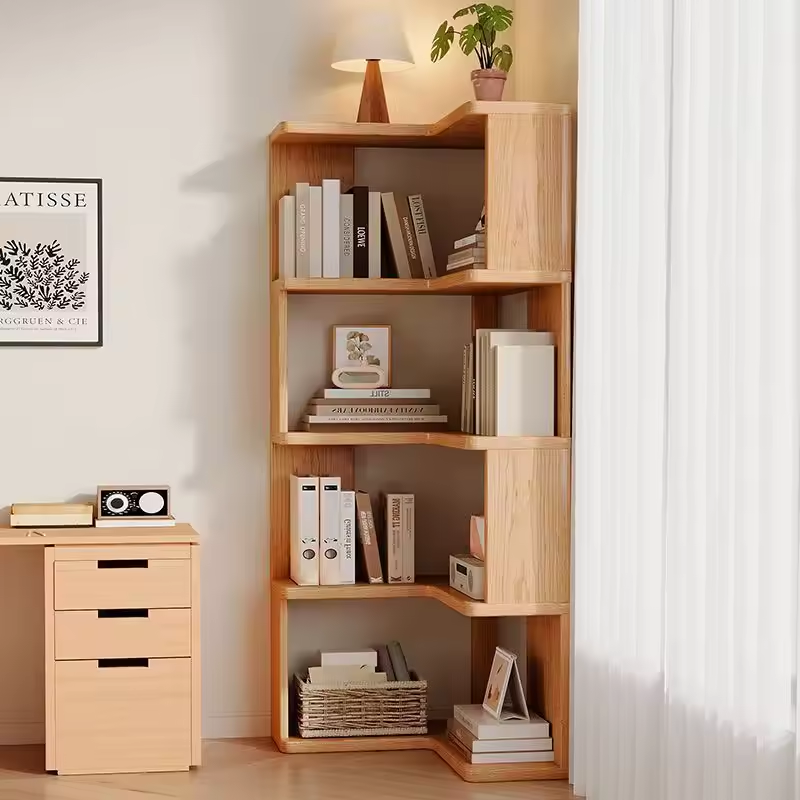
Eco-Friendly Materials for Sustainable Storage
As environmental awareness grows, stackable bookshelves now prioritize sustainability without compromising design. Eco-conscious options include:
1. Recycled and Reclaimed Materials
- Metal Frames: Constructed from post-consumer aluminum or steel, reducing mining waste.
- Wooden Shelves: FSC-certified timber or reclaimed wood ensures responsible sourcing.
2. Low-Impact Production
Many brands use solar-powered factories or water-based adhesives to minimize pollution. For instance, industrial bookshelves with metal frames may be crafted in carbon-neutral facilities.
3. Durable, Long-Lasting Designs
Sturdy construction prevents frequent replacements. Modular systems allow users to repair or upgrade components instead of discarding entire units.
4. Chemical-Free Finishes
Opt for shelves with zero-VOC paints or natural oil finishes to avoid harmful emissions, creating healthier indoor air quality.
5. End-of-Life Recycling Programs
Some manufacturers offer take-back schemes to recycle materials when shelves are no longer needed.
By choosing eco-friendly stackable bookshelves, consumers align storage solutions with environmental values, proving sustainability and style can coexist.
The Future of Stackable Bookshelves
The evolution of stackable bookshelves is poised to blend cutting-edge technology with eco-conscious design, revolutionizing how we store and display personal items. Emerging trends suggest three key directions:
1. Smart Connectivity
Future shelves may integrate IoT features—think sensors to notify users of misplaced books or humidity levels that threaten paper goods. Some prototypes suggest voice-controlled LED lighting synced to mood settings.
2. AI-Driven Customization
Artificial intelligence could soon analyze room dimensions and decor to recommend optimal shelf configurations. Modular systems will leverage AI to suggest layouts that maximize space and aesthetics.
3. Sustainable Innovations
Biodegradable materials and self-healing polymers may replace traditional plastics. 3D-printed brackets could allow users to print custom components locally, reducing carbon footprints.
4. Energy Efficiency
Solar-powered shelves with built-in USB ports could charge devices while displaying books, turning storage into a functional workspace.
These advancements promise stackable bookshelves that are not only eco-friendly and tech-savvy but also deeply integrated into smart homes. As urban living spaces shrink and sustainability becomes paramount, these shelves will evolve into indispensable hubs of innovation and style.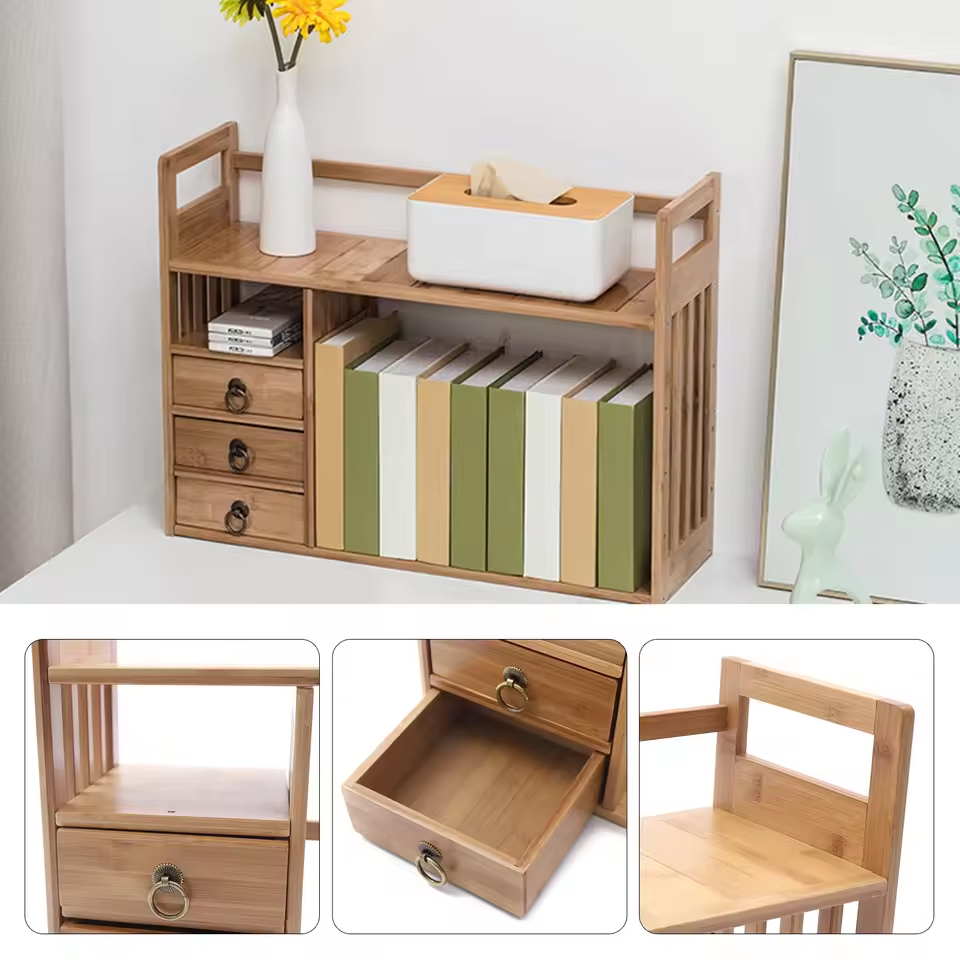
Conclusion: Choosing the Right Stackable System
Selecting the ideal stackable bookshelves involves balancing aesthetics, functionality, and sustainability. Here’s how to make the best choice:
- Assess Your Space: Measure walls and consider room purpose.
- Material Preferences: Opt for eco-friendly options like FSC-certified wood or recycled metal if sustainability matters.
- Weight Capacity: Ensure the system matches your storage needs.
- Design Compatibility: Match styles—whether industrial chic, modern minimalism, or rustic charm.
- Modular Flexibility: Choose systems with adjustable brackets or mix-and-match components for future adaptability.
Stackable bookshelves are more than storage—they’re tools for optimizing space, expressing style, and adapting to changing needs. Whether you seek industrial grit or minimalist elegance, these systems offer unmatched versatility. Prioritize durability, scalability, and eco-conscious materials to find the perfect fit for your home.
